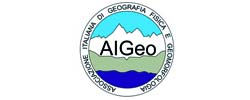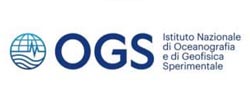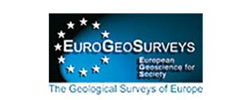SCIENTIFIC PROGRAMME OVERVIEW
A draft version of the XXI INQUA Congress scientific programme is now available.
Please take a look at the daily programme at a glance and in the draft sessions schedule.
1. From Natural Processes to Geohazards
- Earthquakes, palaeo-earthquakes and seismic hazard
- Active volcanoes
- Tsunami and marine geohazard
- Active tectonics as multi-scalar driving processes
- Short to long-term environmental changes (flooding, landslides, desertification, tectonics), and societal response
2. Landforms, facies architecture and sequence stratigraphy
- Geomorphic processes and sedimentary record
- Glacial and periglacial geomorphology
- Wetlands and paralic environments
- Coastline changes under the effects of climate and geological processes
- Geomorphology and stratal architecture of continental margins
- Karst process, deposits, landforms, and landscape
3. Quaternary environments and Human evolution: fossil record, phylogeny, palaeobiology, palaeoecology and cultural models
- Geological and climate forcing on ancient societies and feedbacks
- Geoarchaeology: from landscape to site and back
- Preserving and disseminating the cultural heritage
- Palaeoantropology
4. Ecosystems and biogeography from latest Pliocene to “Anthropocene”
- Response of biota to palaeoenvironmental changes
- Islands, continental bridges and drowned landscapes
- Palaeoecology as a tool for ecosystem management
- Human environment in the (paleo-) Anthropocene
5. Climate record, processes and models
- Climate proxies
- Palaeogeographic, paleoclimatic, paleoceanographic and paleoecological changes in marine and terrestrial systems
- Past global climate records in polar and mountain ice
- Reconstruct past abrupt and extreme climate changes
- Climate changes on sub-millennial to Milankovitch time scale
- Climate modeling and data assimilation: simulate past changes and future scenarios
- Global, regional and local sea-level changes and drivers
6. The Quaternary time machine
- Marine and terrestrial stratigraphy. Advances in correlation
- GSSPs and stratotypes
- Geochronology. Progress in dating technique
- Quaternary Mapping and modeling
| Topic | # | Session Name | Congress day/s |
| 5 | 2 | Session 2: Recent advances in understanding the causes of changes in regional and global palaeofire regimes: resources, tools and new approaches | 17 July |
| 5 | 3 | Session 3: Orbital and millennial vegetation changes at global and regional scales during the Quaternary: insights from data and models | 14 July |
| 1A | 4 | Session 4: Bridging earthquakes over time scales – from the seismic cycle to Quaternary landscape evolution: contributions from the EDITH INQUA-TERPRO-Terrestrial Processes, Deposits and History Project | 18 July |
| 1B | 5 | Session 5: Multidisciplinary hazard and risk study on active coastal and insular volcanoes | 15 July |
| 2D | 6 | Session 6: Recent advances in understanding the Quaternary geomorphological evolution of continental margins | 17 July |
| 4D | 9 | Session 9: The Anthropocene – Its geo-archaeological indicators and early inceptions through the modern | 18 July |
| 7 | 10 | Session 10: Visualizing Science – The art of communicating science | 14 July |
| 5 | 11 | Session 11: Proxy-based reconstructions of atmospheric and oceanic patterns | 19 July |
| 5A | 13 | Session 13: Records of LGM climate and ecosystems dynamics | 19 July |
| 5B | 14 | Session 14: Climate and environmental changes during the Holocene and past interglacials based on biological and geochemical proxies | 18-19-20 July |
| 5 | 15 | Session 15: Understanding regional and global monsoons changes across timescales | 19 July |
| 4A | 16 | Session 16: Linking paleoenvironmental proxies at different scales: potential, problems and limits | 14 July |
| 5 | 18 | Session 18: Dansgaard-Oeschger events in climate models and the real world | 19-20 July |
| 6B | 19 | Session 19: Global characterization of the Neogene–Quaternary (Pliocene–Pleistocene) transition | 17 July |
| 2A | 20 | Session 20: Subglacial erosion, transport, and deposition: from landform and sediment evidence to modeling | 19 July |
| 5 | 21 | Session 21: Records of climate change from MIS 3 and MIS 2 in the Southern Hemisphere: The Lynda Petherick Memorial Session | 15 July |
| 5C | 22 | Session 22: Mountain glaciations and their diversity: Perspectives in geomorphology, geochronology, palaeoglaciology, and palaeoclimatology | 18 July |
| 2A | 24 | Session 24: Fluid venting as a submarine geomorphic process | 14 July |
| 4B | 25 | Session 25: Islands and their relationship with the continent to investigate time and mode of their colonization by terrestrial vertebrates and Homo dispersal | 19 July |
| 4 | 27 | Session 27: Resilience versus collapse: Human responses to climate change in the Quaternary | 20 July |
| 4A | 28 | Session 28: Timing and structure of freshwater ecosystem response to external forcing: evidence from high-resolution multi-proxy lake and peat bog records | 19 July |
| 6 | 29 | Session 29: Escaping the trap: frontiers of trapped charge dating | 17 July |
| 3 | 30 | Session 30: A multiscale geoarchaeological approach for the interpretation of palaeo-landscapes and human activities | 15 July |
| 5 | 31 | Session 31: Processes and feedbacks during glacial terminations | 15 July |
| 5 | 32 | Session 32: Paleo perspectives on a warmer and wetter future Arctic | 20 July |
| 2B | 33 | Session 33: Quaternary Glaciations: Processes, Sediments and Landforms | 17 July |
| 1A | 34 | Session 34: Discussion Panel on Assessing Fault Capability in Different Geodynamic and Environmental Settings | 18 July |
| 5A | 35 | Session 35: Dust dynamics through the Quaternary: terrestrial records of climatic and environmental impacts | 17 July |
| 4 | 36 | Session 36: Conservation paleobiology: late Neogene to Quaternary records as a baseline for conservation of modern ecosystems | 18 July |
| 2 | 37 | Session 37: Reconstructing Quaternary ice sheets | 19-20 July |
| 1A | 38 | Session 38: Reconciling deformation through Geomorphology, Active tectonics and Paleoseismology investigations along the India plate | 14 July |
| 6B | 40 | Session 40: The Anthropocene as a tool for characterizing recent planetary change and predicting future environmental challenges | 17 July |
| 5B | 41 | Session 41: Late Quaternary desertification, landscape changes, paleoclimate, and human adaptation | 14 July |
| 4 | 42 | Session 42: Ecosystem change and hunter-gatherer behavioral decisions in the terminal Pleistocene Pacific Rim | 18 July |
| 2D | 43 | Session 43: Millennial paleo-landscape reconstructions of coastal areas. From field data to modelling approaches | 18 July |
| 4A | 44 | Session 44: Environment-human interfaces, new frontiers of consilience in the reconstruction of the past | 17 July |
| 3 | 45 | Session 45: Plants as Resources for Early Humans – Availability and potential exploitation of useful wild plants through Pleistocene human history | 15 July |
| 3A | 46 | Session 46: Application of biomarkers and CSIA in Pleistocene archaeology | 18 July |
| 1A | 47 | Session 47: The geological record of capable faults | 18 July |
| 2 | 48 | Session 48: Quaternary climate, landscape and surface processes in mountain belts | 15 July |
| 6A | 52 | Session 52: Eurasia, one continent one common past: cross-continental stratigraphical correlations | 20 July |
| 3 | 55 | Session 55: Understanding the human-animal-environment interface in Quaternary South Asia | 17 July |
| 3A | 56 | Session 56: The Palaeolithic of the Americas: population dynamics, behavioral variability and techno- cultural diversity around the Last Glacial Maximum (MIS 2-3) | 14 July |
| 6 | 58 | Session 58: The new challenges for luminescence dating | 17 July |
| 5C | 59 | Session 59: Past, present and future ice-ocean-atmosphere interactions between the Southern Ocean and the Antarctic Ice Sheet | 15 July |
| 3B | 60 | Session 60: Geoarcheology and paleoenvironmental evolution of the coastal areas | 17 July |
| 5 | 62 | Session 62: Paleoclimate, paleoweathering, paleoprovenance and machine learning on sediments during Late Quaternary Period | 18 July |
| 2A | 63 | Session 63: Late Quaternary fluvial archives from the time of Homo sapiens: Stratigraphical, sedimentological, palaeontological and georchaeological records | 15 July |
| 3A | 64 | Session 64: Mapping Ancient Africa: Climate, Vegetation & Humans | 19 July |
| 5F | 66 | Session 66: Data modelling and Inference | 17 July |
| 4A | 67 | Session 67: Exceptional archives: Leveraging visible and non-visible lagerstätten with cutting-edge methods to broaden our knowledge of Quaternary ecosystems | 17 July |
| 2 | 68 | Session 68: Rivers and fans: sediment and landform archives of long-term Quaternary landscape development and environmental change | 15 July |
| 5B | 69 | Session 69: Quaternary palaeolandscape, palaeoclimatic and palaeoenvironmental change in the North Sea | 18 July |
| 3 | 70 | Session 70: Global and local views on the ecological, environmental, and climatic backdrop for hominin dispersal out of Africa in the early Pleistocene | 18 July |
| 3 | 71 | Session 71: Quaternary of North Africa: chronostratigraphy and paleoclimatic variations | 18 July |
| 1 | 72 | Session 72: The role of Tephrochronology in the study of Earth system dynamics during the Quaternary: Event timings, duration and frequencies | 19-20 July |
| 3 | 73 | Session 73: Altered landscapes (Pleistocene and Holocene) of the archaeological sites | 15 July |
| 4 | 74 | Session 74: Advances and new challenges in modeling landscape change in the “Anthropocene”: Transdisciplinary approaches using remote sensing and geoarchaeology | 14 July |
| 5A | 77 | Session 77: Quantitative proxies for paleoenvironmental reconstructions from loess and terrestrial archives | 19 July |
| 1A | 78 | Session 78: Subduction zone palaeoseismology | 14 July |
| 3A | 79 | Session 79: The Global Tropics from the Pliocene to the Anthropocene | 19 July |
| 6C | 80 | Session 80: Magnetostratigraphy and Environmental Magnetism contribution to understand paleoclimatic and paleoenvironmental changes | 14 July |
| 4A | 82 | Session 82: Data science and paleoecology: current intersections and advances | 19 July |
| 5B | 83 | Session 83: Quaternary glacier-climate dynamics in the mid & high latitudes of the Southern Hemisphere | 15 July |
| 5 | 84 | Session 84: Extending the limits of ice core science beyond new analytical, conceptual and inter- disciplinary frontiers | 18 July |
| 5 | 85 | Session 85: Loess and dust deposits: beyond local studies | 18 July |
| 3D | 87 | Session 87: Prehistoric hunter-gatherers’ adaptation during the Last Glacial in Europe | 19 July |
| 3 | 88 | Session 88: Human-environmental Interactions Along the Ancient Silk Roads | 18 July |
| 5 | 89 | Session 89: Cenozoic sea-level indicators and ice sheet constraints to global sea-level change | 17 July |
| 3B | 90 | Session 90: Ancient DNA from Quaternary and Archaeological Sediments | 17 July |
| 3B | 92 | Session 92: Zooming into the Quaternary Research in South Asia: Understanding the landscape- cultural-climatic evolution | 18 July |
| 1E | 95 | Session 95: Impacts of abrupt climate change on ecosystems, landscapes and societies through INTegration of Ice-core, MArine and TErrestrial records (INTIMATE) | 14 July |
| 5A | 98 | Session 98: Past vegetation dynamics and their role in climate change | 17 July |
| 3B | 99 | Session 99: Lipid biomarkers as molecular archives of human activity from archeological sites | 18 July |
| 3 | 100 | Session 100: Multi-methods geochronological approaches on Palaeolithic sites | 15 July |
| 5A | 101 | Session 101: Integration of palaeoecological proxy data for the reconstruction of climate and environment dynamics | 15 July |
| 3 | 102 | Session 102: West African Quaternary: understanding past climate oscillations and human responses to anticipate future adaptations | 18 July |
| 5 | 103 | Session 103: Terrestrial hydroclimates: towards quantification and climate model comparisons | 18 July |
| 3 | 104 | Session 104: Novel molecular tools (biomarkers and DNA) in climatic and environmental archives – challenges, advances, and prospects | 19 July |
| 6D | 105 | Session 105: Quaternary mapping across the world and the IQUAME European experience | 15 July |
| 2D | 106 | Session 106: Evolution of coastal environments under natural and anthropogenic processes: the role of geoscience | 19 July |
| 1A | 107 | Session 107: More than the sum: fault re-ruptures and cumulative damage during seismic sequences | 14 July |
| 7 | 108 | Session 108: Equitable and ethical knowledge production in Quaternary Science | 14 July |
| 3 | 109 | Session 109: Animals, environments & humans: diverse perspectives from the Quaternary | 14-15 July |
| 2A | 112 | Session 112: Micromorphology as a tool in Quaternary studies to reconstruct changes in natural and anthropogenic sequences | 18 July |
| 3A | 115 | Session 115: Palaeoenvironmental research in SW Asia: Recent advances & future opportunities | 14 July |
| 5 | 118 | Session 118: Cave deposits for in deep understanding Quaternary climate and environment | 18 July |
| 5 | 120 | Session 120: Volcanic impacts on climate and society | 19 July |
| 3 | 121 | Session 121: The anthropology of climate change | 14 July |
| 1A | 123 | Session 123: Advances in tectonic geomorphology, paleoseismology, and multi-disciplinary active fault studies | 17 July |
| 3D | 125 | Session 125: African Quaternary Anthro-environments: Palaeoecology and cultural responses to environmental variance | 15 July |
| 5 | 126 | Session 126: Sub-annual to decadal records of environmental change | 19 July |
| 3C | 127 | Session 127: Uncovering the environmental legacies of colonialism | 15 July |
| 3 | 128 | Session 128: African Acheuleans in the Early/early Middle Pleistocene: triggers, techno-subsistences, time-lines | 15 July |
| 3A | 130 | Session 130: Advancing paleoscience in underrepresented regions: promoting records of past socio-environmental systems in the Global South and beyond | 15 July |
| 5B | 133 | Session 133: Unravelling Mediterranean sensitivity to past rapid climate variability | 20 July |
| 6C | 134 | Session 134: How Absolute and How Relative: Challenges and Resolutions Associated with Applying Dating Techniques in the Quaternary period | 14 July |
| 4A | 135 | Session 135: Mammals biochronology and palaeoecology of the Euro-Mediterranean Quaternary | 15 July |
| 3A | 137 | Session 137: Geological and climate forcings on human groups / ancient societies, and their feedbacks | 17 July |
| 3A | 138 | Session 138: Wet Environments and Human Communities: Interaction and Resilience in the Holocene and Antiquity | 18 July |
| 3A | 139 | Session 139: Holocene Global Landuse | 15 July |
| 5 | 140 | Session 140: Quantifying climate change in Australasia: challenges and opportunities | 20 July |
| 4C | 141 | Session 141: How can the Quaternary sciences contribute to scientific assessment of biodiversity, ecosystems, and nature? | 17 July |
| 4C | 142 | Session 142: Palaeoecology and restoration ecology | 19-20 July |
| 4D | 143 | Session 143: Environmental responses to climatic and human impacts in endangered biodiversity hotspots: past and present for future | 17 July |
| 2 | 145 | Session 145: Climate Records from Coastal Systems | 17 July |
| 5G | 147 | Session 147: Sea-Level, Ice-Sheet, and Earth system evolution: understanding the past to constrain the future | 19 July |
| 5C | 148 | Session 148: Climate-glaciers interactions in mid-latitude mountains | 18 July |
| 4A | 152 | Session 152: Archaeological cave sediments: a key to decipher past human behavior and palaeoclimatic change | 19 July |
| 1 | 154 | Session 154: Quaternary research in South America: paleoclimate, tectonic, volcanic and surface processes | 17 July |
| 2D | 155 | Session 155: Linking land and sea – multiple approaches to investigating human-environment interactions in the coastal zone | 15 July |
| 2 | 156 | Session 156: Multidisciplinary approaches of calcareous tufas and travertines: investigating environments and climates from Prehistory to today | 17 July |
| 5B | 157 | Session 157: Peatlands through time: developmental dynamics and palaeo-environmental reconstruction | 19 July |
| 2A | 158 | Session 158: The geomorphic signature of marine and continental Quaternary deposits | 19-20 July |
| 1E | 159 | Session 159: Human-environment interactions in coastal areas: new ways to learn from the past | 17 July |
| 2A | 160 | Session 160: Geoheritage: role of scientists to keep earth scientific treasures for future generations | 17 July |
| 5E | 162 | Session 162: Astronomical forcing and nonlinear climate feedbacks during the Pleistocene Epoch | 18 July |
| 3 | 163 | Session 163: Quaternary palaeoenvironmental dynamics/variability: promoting multiple proxy records from West-Central Africa | 18 July |
| 6A | 164 | Session 164: Understanding MIS 5d-a: sediments, paleoclimate, chronology and long-distance correlation | 14 July |
| 1E | 166 | Session 166: Quaternary palaeohydrology: from the reconstruction of spatial impact of extreme events to long-term changes in catchments and landscapes | 19-20 July |
| 2A | 169 | Session 169: Quaternary Proglacial Lakes: Sediments, Landforms, Impacts | 18 July |
| 4A | 170 | Session 170: Biotic markers and measures of biodiversity of Holocene environmental change | 20 July |
| 5 | 173 | Session 173: Palaeoclimate records from the Southern Hemisphere | 18 July |
| 4A | 174 | Session 174: Tracing the impact of palaeoenvironmental changes in ancient DNA | 19 July |
| 1A | 176 | Session 176: Tectonic and Climate-driven Landscape Evolution a never-ending challenge for modern society (Thoughts from LEMON project, INQUA – AIQUA) | 18 July |
| 5 | 177 | Session 177: Factors influencing the diversity of loess sedimentary environments and the resulting variability of palaeoclimatic and palaeoenvironmental signals | 18 July |
| 1 | 179 | Session 179: From coastal geomorphology to earthquake hazard (F-Coast2EHZ): new perspectives and multidisciplinary approaches | 15 July |
| 1B | 180 | Session 180: Sedimentary record of past catastrophic coastal flooding (tsunami, storms) | 14 July |
| 1 | 181 | Session 181: Transferring scientific knowledge on Quaternary geological processes and geohazards into disaster risk reduction activities | 15 July |
| 1A | 182 | Session 182: From Cores to Code: Data-Model Integration to Improve Reconstructions and Forecasts of Coastal Change | 14 July |
| 2 | 183 | Session 183: Frontiers in drylands research | 17 July |
| 1A | 184 | Session 184: Seismic hazard assessment in populated areas of Latin America: incorporating seismogenic faults | 14 July |
| 1D | 185 | Session 185: Active faults evolution: revelations from different timescales | 15 July |
| 3 | 186 | Session 186: The Long Walk to the Anthropocene: Exploration within Quaternary contexts | 17 July |
| 7 | 187 | Session 187: Equity, Diversity and Inclusion Initiatives in the Quaternary Sciences | 14 July |
| 3 | 190 | Session 190: Paleosol memory of environmental change and man-landscape interactions: from soil profile to geosystem | 19 July |
| 5E | 193 | Session 193: Indo-Asian Monsoon on decadal to centennial-millennial scale and their link to the Indo- Pacific past climate variability | 20 July |
| 6D | 196 | Session 196: Quaternary sedimentary-basins evolution: controlling factors and implications for future scenarios or past reconstructions | 14 July |
| 4A | 197 | Session 197: How can archaeology, palaeoecology, traditional knowledge, and more-than-human approaches contribute towards a more sustainable and culturally informed future? | 17 July |
| 1B | 204 | Session 204: Late Quaternary Faulting and Earthquake Geology in volcanic areas | 15 July |
| 3 | 205 | Session 205: The environment background and human adaptations during the transition or shift from archaic humans to modern humans in East Asia | 15 July |
| 4A | 207 | Session 207: Not only z-corals: Quaternary reefs across the latitudinal and depth gradients | 15 July |
| 5 | 208 | Session 208: Achievements and new perspectives in Quaternary sciences from scientific drilling | 19 July |
| Metiq | Metiq | Session Metiq | 14 July |


















